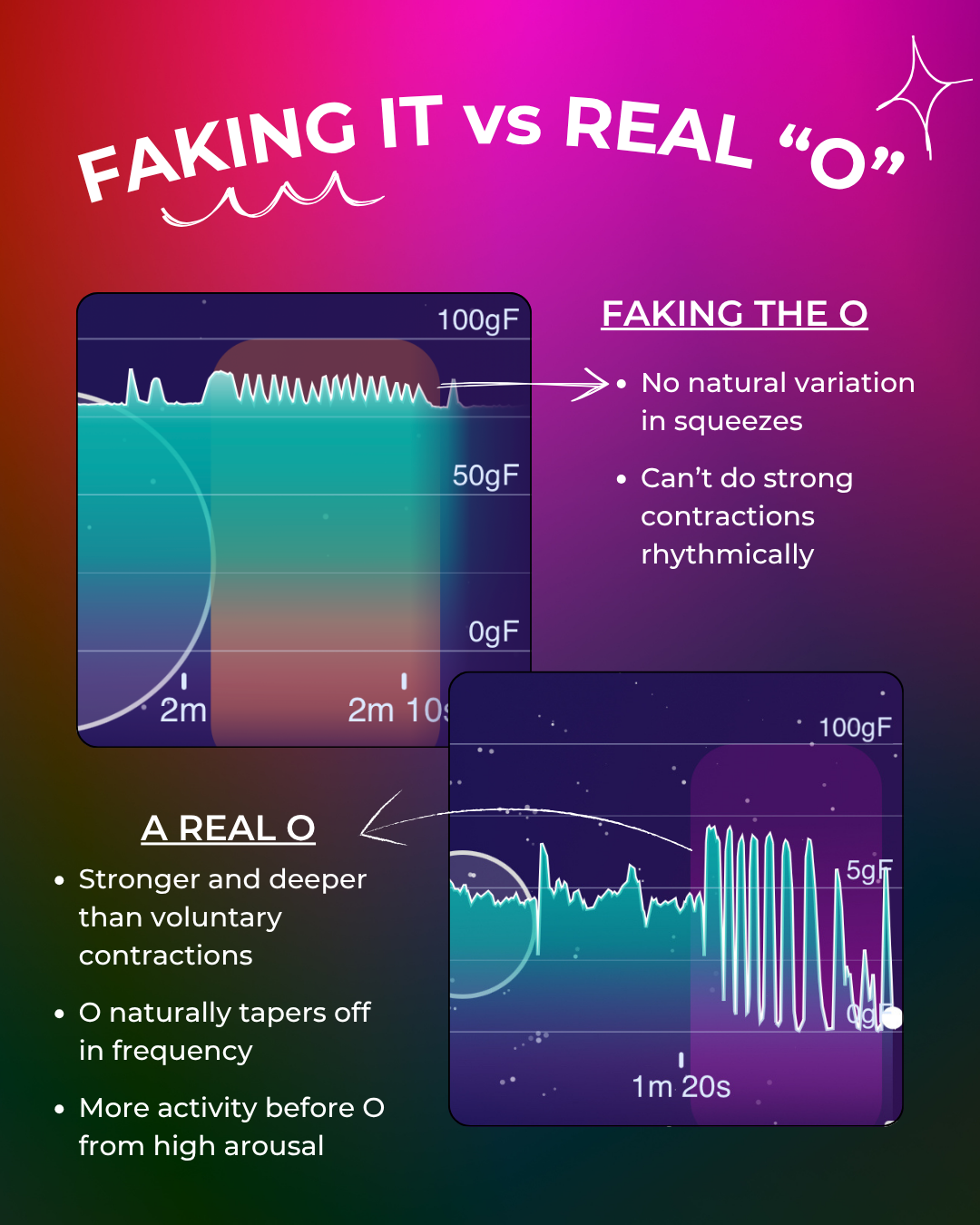
Recently, Dee Hartmann, PT, LPT presented the preliminary results of her most recent study on the female orgasm at ISSWSH.
TL;DR
Hartmann et al found that women ages 31-40 took the longest to orgasm at 10.0 min (598s), but produced the longest orgasmic response (30sec). Women ages 51-60, however, took the least time to orgasm, 3.7min (219s), but created the greatest orgasmic force (1425gm/f). Keep reading for more information on the methodology and more. The following is transcribed from the poster Hartmann wrote and presented at ISSWSH:
Introduction
Female orgasm has been described as “a sense of throbbing once a second, due1 to rhythmic contraction and relaxation of the pelvic floor muscles…” . Physiologic measurement of pelvic floor muscle (PFM) activity has been2reported utilizing electromyography as well as rectal and vaginal pressure3biofeedback. None have reported on the specificity of PFM variability during arousal and orgasm or variability across the life cycle. Likewise, there’s been no correlation between these physiologic responses to the subjective nature of orgasm. While knowledge of neuroendocrinology and neuroimaging contribute to some understanding of the physiology of the sexual cycle, research on variability and correlation of physiologic responses of PFMs to the subjectivity of orgasm is lacking.
Objectives
The purpose is to objectively measure, compare, and correlate the following physiologic responses: a) time to orgasm; b) peak orgasmic force; and c) length of orgasm.
Methods
Objective data recorded by in-home users of Lioness (SmartBod Inc), an intravaginal, pressure biofeedback device capable of recording PFM activity in response to clitoral vibration. Arousal and orgasmic activity were recorded to users’ phones and a secure SmartBod server. Users were identified by a unique device number with no personal identifiers. Additional demographic data from 26 consenting users were collected and a secondary analysis of the data was performed by the first author. One-hundred-sixty-two biofeedback tracings were included in the review. Data was grouped according to age range, orgasmic type (volcano, avalanche, wave), and by length of time to orgasm regardless of age.
Results
Ages ranged from 21-60. 17/26 were nulliparous; 5 were peri- or post menopausal. Review of age grouped data averages showed those 31-40 took the longest to orgasm at 10.0 min (598s) but produced the longest orgasmic response (30sec). Those 51-60 took the least time, 3.7min (219s),however created the greatest orgasmic force (1425gm/f). When comparing averages of the 3 orgasmic types, volcano and avalanche patterns were equally dispersed among all groups with the 51-60s patterning only seen as wave. Those identified as having an avalanche pattern took 30sec to orgasm but produced the longest orgasmic response (30sec). Those with the wave pattern produced the greatest peak force at 940.8gm/f with a median time to orgasm of 8.0mim(483s). Those below the median in time (less time to orgasm) took 3.8min (227s) on average to orgasm with peak average forces of 783gm/f. Those above the median, on average took 13.2min(789s) to reach orgasm when a peak orgasmic force of 722gm/ was produced.
Conclusion
Orgasmic patterns from this small sample of women suggest that those in the 31-40 age range have the longest orgasms and need the most arousal to get there; however, those in the 51-60 age range produced the greatest peak orgasmic force. Those with the avalanche patterned orgasm take the longest to get there as but have the longest orgasm. Taking less arousal time overall appears to create the strongest orgasmic response.
References:
- Human Sexual Anatomy. Dickinson, Robert Latou. Published by Williams & Wilkins, 1933
- Gillan P, Brindley GS. Vaginal and pelvic floor responses to sexual stimulation. Psychophysiology 1979;16:471–81.
- Bohlen JG, Held JP, Sanderson MO, Ahlgren A. The female orgasm: pelvic contractions. Arch Sex Behav 1982;11:367–86.



